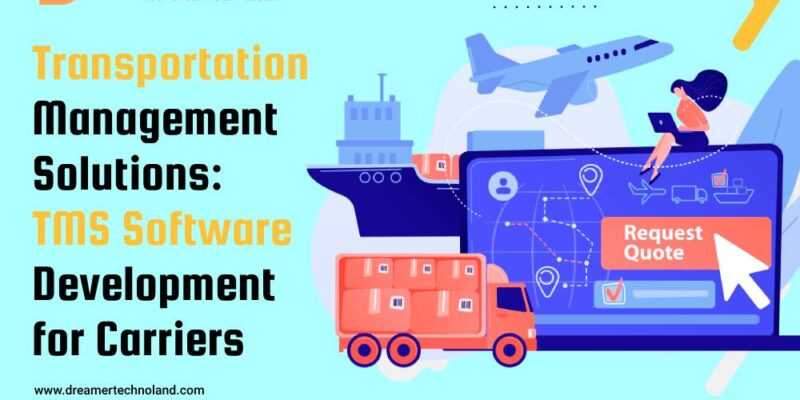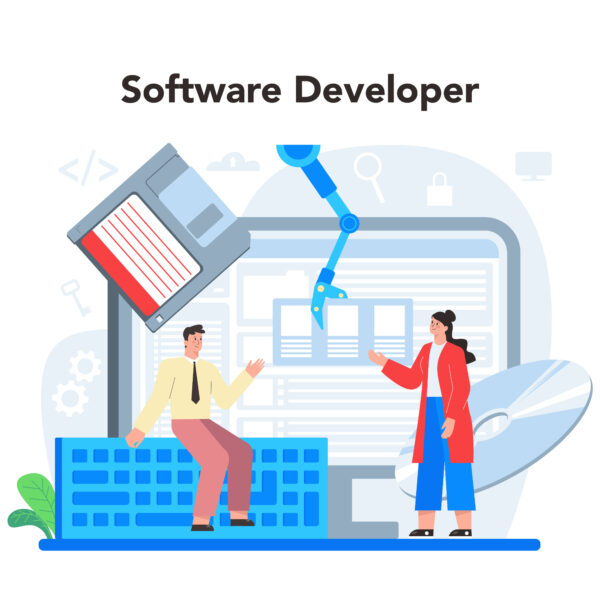
In the transportation industry, fleet and vehicle management systems are an absolute necessity for the safe and smooth transportation of goods. Without the utilization of reliable software for consistent monitoring, there will be issues with the existing systems. Therefore, it is always recommended that you invest in reliable transportation management solutions that would offer you consistent results and help in expanding your business. In this detailed blog, we will share the 7-step process to build your own transportation management system that would help you in managing your vehicles and handling the operations.
Building custom transportation management solutions can provide significant benefits for your logistics operations. Here’s a step-by-step guide:
Step 1: Define Your Requirements
- Identify core functionalities: Determine the essential features for your TMS, such as shipment planning, execution, tracking, and reporting.
- Set goals: Clearly define what you aim to achieve with transportation management system development company, such as improved efficiency, cost reduction, or enhanced customer service.
- Consider integrations: Identify existing systems (ERP, WMS, etc.) that need to integrate with the TMS.
Step 2: Market Research and Analysis
- Competitor analysis: Study existing TMS solutions to identify gaps and opportunities.
- Industry trends: Analyze industry trends to incorporate relevant features using TMS software development.
- Customer needs: Understand your customers’ expectations and requirements.
Step 3: Design and Prototyping
- User interface (UI) design: Create a visually appealing and user-friendly interface.
- User experience (UX) design: Ensure a smooth user flow and intuitive navigation with the assistance of transportation management application development company.
- Wireframing and prototyping: Develop interactive prototypes to test the user experience.
Step 4: Software Development
- Technology stack: Choose suitable programming languages, frameworks, and databases (e.g., Python, Django, React, PostgreSQL).
- Core features: Develop essential functionalities like shipment planning, execution, tracking, and reporting in the integrated transport management system.
- Data integration: Integrate with existing systems for seamless data flow.
- Mobile app development: Consider developing a mobile app for drivers and clients.
Step 5: Testing and Quality Assurance
- Functional testing: Verify that all features in the transportation management solutions and ensure they work as expected.
- User acceptance testing (UAT): Get feedback from end-users to identify areas for improvement.
- Performance testing: Evaluate the system’s performance under different load conditions.
- Security testing: Ensure data protection and privacy.
Step 6: Deployment and Implementation
- Pilot testing: Test the system in a controlled environment before full-scale deployment.
- User training: Provide training to employees on how to use the TMS effectively.
- Data migration: Transfer existing data to the new and integrated transport management system.
- Go-live: Launch the TMS and monitor performance.
Step 7: Maintenance and Support
- Ongoing support: Provide technical support to user’s transportation management solutions.
- Updates and enhancements: Continuously improve the TMS based on user feedback and changing requirements.
- Data backup and security: Implement robust data protection measures.
Why You Should Build Your Own Integrated Transport Management System?
Choosing custom TMS software development offers several advantages:
Tailored Solution
- Specific Needs: You can design the system to perfectly match your business operations and workflows.
- Scalability: The system can grow and adapt as your business expands.
- Competitive Advantage: A unique ITMS can differentiate your business from competitors.
Data Ownership and Control
- Complete Control: You own the data and have full control over its usage and security.
- Data Privacy: You can implement stringent data protection measures.
- Reduced Reliance: Minimize reliance on third-party providers.
Cost Efficiency
- Long-Term Savings: While initial development costs might be higher, a custom system can lead to significant cost savings in the long run.
- Avoid Unnecessary Features: You only pay for features you need, eliminating unnecessary expenses associated with transportation management solutions.
Improved Efficiency and Productivity
- Optimized Workflows: Customize the system to match your exact business processes.
- Real-time Data: Access up-to-date information on shipments, vehicles, and drivers.
- Data-Driven Decision Making: Leverage data to optimize operations and reduce costs.
Competitive Advantage
- Unique Features: Differentiate your business by offering features not available in off-the-shelf solutions.
- Intellectual Property: Own the intellectual property of your custom system.
- Scalability: Easily adapt the system to changing business needs and market conditions.
Why You Should Rely on Logistics Software Development Company?
Relying on a custom logistics software development company offers numerous advantages for businesses seeking to optimize their operations:
Expertise and Specialization
- Industry Knowledge: Developers have in-depth understanding of logistics challenges and requirements.
- Technical Proficiency: They possess the necessary skills to build robust and scalable software solutions.
- Best Practices: They are aware of industry best practices and can incorporate them into the software.
Time and Resource Efficiency
- Focus on Core Business: You can concentrate on core logistics operations while the development team handles the software.
- Faster Time-to-Market: Professional transportation management system development company can deliver the software quickly.
- Cost-Effective: Outsourcing development can often be more cost-efficient than building an in-house team.
Customized Solution
- Tailored Software: The software can be customized to align perfectly with your business needs and processes.
- Flexibility: You can easily adapt the software to changing business requirements.
- Integration: The software can be integrated with existing systems for seamless operations.
By partnering with a logistics software development company, you can gain a competitive advantage.
Summary
By following these steps and working with experienced software developers, you can create a custom TMS that meets your specific needs and drives business growth. With the help of a development company assistance, you can improve operational efficiency and make data-driven decisions to optimize your logistics operations. Connect with Dreamer Technoland for assistance regarding transportation management system or building the best technology for ecommerce website.










